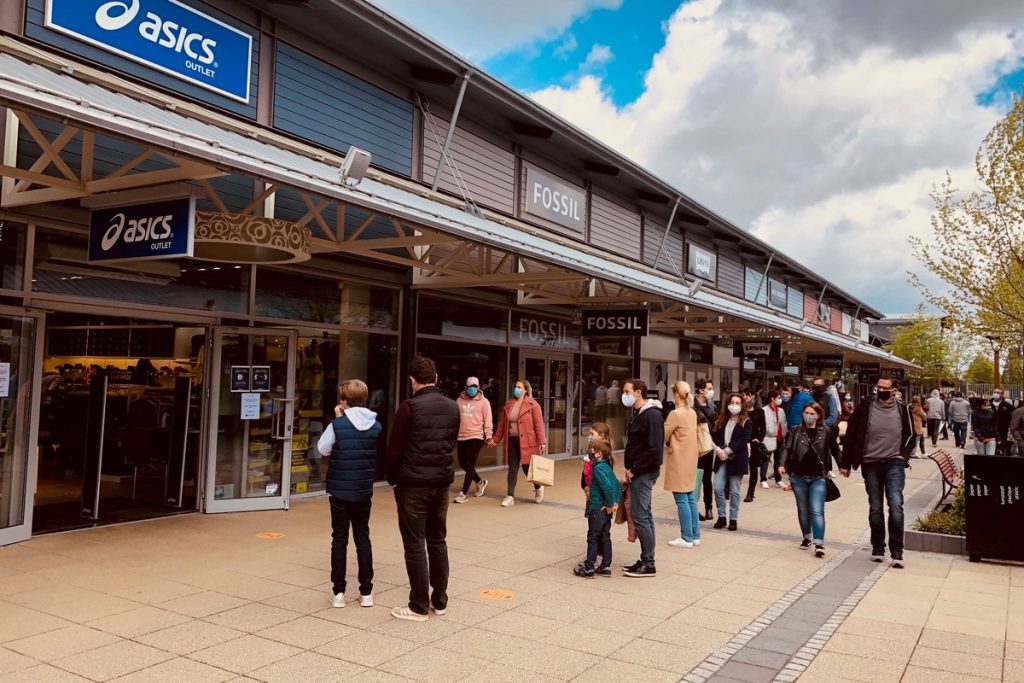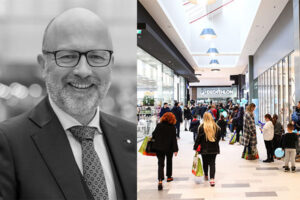ACROSS: The corona crisis paralyzed almost the entire European retail landscape. How is VIA Outlets handling the current challenges?
OTTO AMBAGTSHEER: After having had to close eight of our eleven centers following government advice, we are already starting to reopen some centers; Zweibrücken Fashion Outlet near Frankfurt, Fashion Arena Prague Outlet and Wroclaw Fashion Outlet in Poland are now open for business again. The remaining five are in the process of opening in the near future, with Landquart Fashion Outlet as the next one in line, following the communication of an opening date by the local authorities. During these reopenings, the health and safety of our guests and employees remains our main concern during these unprecedented times and we are making every effort to ensure a safe shopping experience as well as the wellbeing of our staff. Measures to allow for social distancing have been put in place, alongside reinforced sanitary and hygiene advice and stations throughout the center and in the stores. Where centers are still closed, we continue actively working to reduce operating costs and working alongside brand partners to ensure both parties come out of the crisis in the best possible shape.
Whilst the Covid-19 pandemic has affected us, just like every other retail player around the world, we are confident in VIA Outlets’ resilience and remain optimistic about the future. Not only has the outlet segment historically performed well in times of economic downturn, but we also know that–following this particular crisis–many brands will have vast amounts of excess stocks due to temporary closure of the centers as well as their full-price stores. We see that many brand partners are asking for additional space, temporary stores and pop-up spaces. We are doing our best to help them by offering additional space in centers where they already have a presence as well as in new centers to allow them to explore new markets.
ACROSS: Which of your properties have remained open?
AMBAGTSHEER: Oslo Fashion Outlet, Hede Fashion Outlet in Gothenburg and Batavia Stad Fashion Outlet near Amsterdam, have remained open throughout the pandemic. In these regions, governments have not asked us to close, and we have therefore remained committed to our role as a service provider for our brand partners–ensuring that the retailers that have chosen to keep their stores open, have had access to the stores.
ACROSS: How sustainable will the change in consumer behavior actually be after the crisis?
AMBAGTSHEER: As the global economy will be uncertain for some time, customers are set to become increasingly attracted to deals. This is a major reason why outlets are so resilient in difficult economic times; customers become increasingly price-sensitive whilst still attracted to brands and prioritizing quality over quantity. After long periods of lockdown, there will also be an increased appetite for real, human experiences and customers will be looking for places where they can feel safe and secure to enjoy these experiences. Open air centers will be particularly favored in this respect. Furthermore, one-stop shop locations will see an upswing as they allow guests to cover many different needs with minimal travelling. This trend is already evident in the centers we have re-opened within our portfolio, where we see healthy footfall numbers shortly after the majority of the key brands have re-opened their doors. And it is clear that the guests that are present are on a mission, as the spend per visitor is at the same or, in some cases, higher level as prior to the pandemic.
Changed customer behavior means that we need to implement some changes, such as putting crowd management in place while guests will want to avoid crowds and big groups of people. The way in which customers shop will also change, at least on a temporary basis. For example, in some of our markets, we will not be able to let guests try on clothes before they buy them, and clothes that are returned will need to be quarantined for three days. In some of our stores, guests will also be able to shop by appointment, even before or after closing hours, or get the support of a virtual personal shopper. Like many other things during this pandemic, this will quickly become the new normal, and we do not think it will negatively affect the customer experience in any significant way.
ACROSS: The product ranges of outlet centers are not particularly geared towards meeting consumers’ basic needs. Do you expect consumers to become more hesitant to buy designer goods?
AMBAGTSHEER: Outlet centers do not aim to cover the most basic shopping needs of consumers; however, they do cater to another basic need: the need for social experiences and real human connections. We aim to offer guests a day out for the entire family, and in the post-Covid-19 world, this will be more important than ever. Whilst consumers may temporarily be more hesitant to make expensive purchases, we know that outlets are resilient in times of economic downturn, as consumers become increasingly price-sensitive while remaining attracted to quality and familiar brands.
ACROSS: Outlet destinations are strongly characterized by local and international tourism. Since travelling will remain restricted all over Europe, do you expect further sales losses in this context?
AMBAGTSHEER: Looking at the rest of 2020, we do not expect much tourism from non-EU countries. While it might pick up in the latter half of the year, the numbers will be relatively small and the majority of sales will come from domestic guests. However, we do expect an upturn in guests choosing to go on vacation in their own countries–so-called staycationers–which will lead to more growth coming from domestic tourism as well as cross-border tourism. We remain active in the tourism space by maintaining good relationships with accommodation and transportation providers and tourist attractions in our regions, in order to attract as many tourists as possible under the current circumstances.






